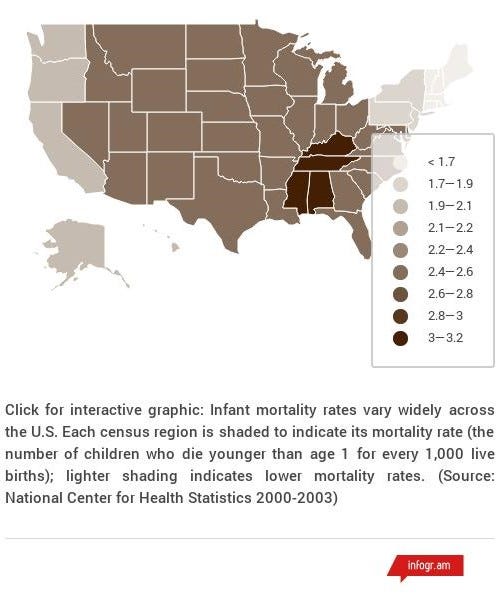 Cleopatra Abdou is an assistant professor of gerontology at the University of Southern California Leonard Davis School of Gerontology. The views expressed below are her own. The column originally appeared on Medium May 12, 2017.
Cleopatra Abdou is an assistant professor of gerontology at the University of Southern California Leonard Davis School of Gerontology. The views expressed below are her own. The column originally appeared on Medium May 12, 2017.
Mother’s Day is Sunday, May 14 , a day that many Americans will mark with cards and flowers. However, a more valuable way to honor mothers can be found in the story of Anna Reeves Jarvis, for whom Mother’s Day was founded a few years after her death in 1905.
Reeves Jarvis was a West Virginia organizer who held “Mothers’ Day Work Clubs” to educate women about health and childcare and provide medical and household assistance for sick mothers in an effort to reduce disease and infant mortality rates.
In other words, her clubs provided various forms of social support.
Along the way, Jarvis’s Mothers’ Day Work Clubs became the individualized Mother’s Day that it is today, a holiday so commercial that her daughter spent the rest of her life renouncing the holiday that she had created in her mother’s honor.
Today, many of the challenges that Reeves Jarvis had worked so hard to help other mothers overcome remain, and in some aspects, have worsened. Mothers face a host of cultural, social, political and even medical challenges that may thwart their maternal and broader desires and responsibilities.
Families are spread out across the country and world. Postpartum hospital stays and breastfeeding support are minimal. Most mothers need to work, but are not afforded enough childcare or paid time off to adequately care for their children and do their jobs. Unrealistic media representations make motherhood look easy and natural, or, the opposite extreme, hellish and disastrous. Too many mothers struggle alone and in silence, isolated from the very social support that could help them, and their children, thrive.
The consequences of these trends are real. The statistics are startling.
A matter of life and death
- The United States has one of highest maternal and infant mortality rates of any developed nation. About 5.8 infants for every 1,000 live births die in this country, compared to about 3.6 in much of northern Europe, federal data show. At the same time, the U.S. maternal mortality rate is 28 deaths per 100,000 — worse than that of Iran, Libya and Turkey, according to the World Health Organization. This average tells you nothing of the reality of women in certain segments of the U.S. population who face outcomes that you would expect only of poverty-stricken nations.
- Social isolation is rampant, and, reflecting this, depression in the general population has reached epidemic levels. In 2015, nearly 7 percentof the adult U.S. population, or 16.1 million adults, struggled with depression, and, according to the World Health Organization, depression is the leading cause of disability worldwide for women across the lifespan, as well as for all middle-aged adults (female and male).
- Rates of postpartum depression continue to rise (now 1 in 10 in the United States) as new moms find themselves isolated and alone during the physically, mentally, and emotionally demanding “fourth trimester” and first year of a new life. Critically, social relationships, including perceived availability of social support, are important predictors and deterrents of postpartum depression.
- Women comprise more than half of our society — and, therefore, more than half of our human capital. Even so, many women drop out of the workforce, either temporarily or permanently, following the transition to motherhood. When they do return to work, they are often under-employed and under-compensated. Globally, mothers with two or more children are especially susceptible to the motherhood pay gap.
As a society, we can commit to reclaiming Mother’s Day as a time for community-wide calls to action that will provide new mothers with the social support that they need.
Safety net
Having social support means that we are part of a network consisting of family, friends, colleagues, and larger collectives upon whom we can draw to meet our emotional and logistical needs. Social support enhances quality of life during good times, and it provides a critical safety net during hard times. All of us, female or male, need it.
Social support consists of four dimensions, plus a fifth that I advocate for based on my research on human flourishing, which identifies the factors that allow individuals, families, communities, and societies to be healthy, happy, and successful, even against great odds.
1. Emotional/informational support is when you display positive emotions and empathetic understanding toward someone, or you provide someone with advice, information, guidance or feedback.
2. Tangible support is when you provide material or logistical assistance to someone.
3. Positive social interaction is the type of support you provide when you make yourself available to do something fun and nourishing with someone.
4. Affectionate support is when you express love and affection toward someone.
These four types of support are provided interpersonally (between people) and are life-sustaining. But people don’t operate in a vacuum. People operate within societies, and societies have clearly defined — whether spoken or unspoken — cultural norms and social values. The types of social support that people can offer to one another are constrained by the social values and the sociocultural structures that govern their society.
This means that the availability and efficacy of the four types of interpersonal social support are largely dictated by a fifth dimension of support, which isn’t part of the scientific literature on social support, but is, nevertheless, important for mothers and the people who depend on them: normative or structural support. And it is this support that is sorely lacking in our society, and, critically, that leads to a deficit in the other forms of social support as well.
In normative/structural support, the dominant societal structures convey important messages (via material and human resources, policies, and protections) about roles, responsibilities, and behaviors as normative, desirable, and valued.
Great expectations
Motherhood receives terribly mixed messages in our society. Although the common American rhetoric would suggest that the role of a mother is indeed normative, desirable, and valuable; in reality, there are few resources or actions backing up that message. This inaction sends an even louder message to mothers (as well as to girls and women who may one day become mothers), as do the powerful unspoken messages that pervade our society: that women become personally lackluster and a professional liability once they become mothers. It is not a leap to equate ‘uninteresting’ and ‘diminishing returns’ with undesirable and a lack of worthiness in our society.
We are long overdue for positive shifts in the norms surrounding how we view and support mothers as a society. This starts with our elected officials, our CEOs, and other cultural influencers and people in positions of power. It also starts with mothers and other women.
How you can help
Here are some ways to offer each of the five types of social support to the mothers with whom you live and work:
1. Emotional/informational support:
- Pick up the phone, or stop by, to let a friend or relative know that she is not alone in a specific challenge she is facing right now.
- Help a mother research one of her most burning questions or goals.
- Mentor or sponsor (sponsorship is going a step beyond mentoring to actually use your social capital to open doors for someone else; men have been doing this for one another for centuries) a colleague who is a new mom (or a new mom again, as in, having just had her second, third, or fourth baby).
2. Tangible support:
- Make a donation to your favorite mom-centric charity.
- Have groceries or dinner delivered for your favorite mom and her family; this provides her with both more money and more time.
- Offer your childcare services for an hour or two so that a mom can quietly read a book or go have coffee with dad (this enables her to nurture another invaluable source of social support simultaneously).
• Positive social interaction:
- Have a sisters/girlfriends afternoon out for tea or manicures.
- Invite your colleague to a walking meeting, where you can connect and move at the same time — both work wonders for outlook and focus, so you will more than make-up that hour in productivity.
- Hold a weekly or monthly family bootcamp in the park or at the beach, where the adults can get some exercise and the kids can play.
4. Affectionate support:
- Give a mom a hug (or a high-five, if a hug would be weird).
- Call, text, or email your favorite moms to share the three things that you most admire about them.
- Write your mom, grandmother, or other “Mommy Mentor” a “thank you” letter for all she has given and taught you.
5. Normative/structural support:
- Send two Mother’s Day cards this year: one to your favorite mother and another to your elected official to express support for the social and health policies that deeply affect current and future mothers, including maternity healthcare coverage and mandatory paid maternity/family leave.
- Use any position of power that you occupy to make life better for the next generation of women and mothers. For instance, suggest that your company institute pregnancy parking, assistance with childcare expenses, or telecommuting so that moms can apply the time that otherwise would have been spent commuting toward important projects and goals.
- Be mindful of your language and interrogate your own biases about, and toward, mothers so that you contribute — through your thoughts, speech, and actions — to the positive shift in cultural norms and societal valuation of motherhood and mothers. Work hard to make sure this includes mothers of all colors and backgrounds, regardless of whether they work both inside and outside of the home, or inside of the home alone.
Ensuring that every mother has the five types of social support that she needs to flourish makes every day Mother’s Day. When mothers flourish, children flourish; and when families flourish, societies flourish.






